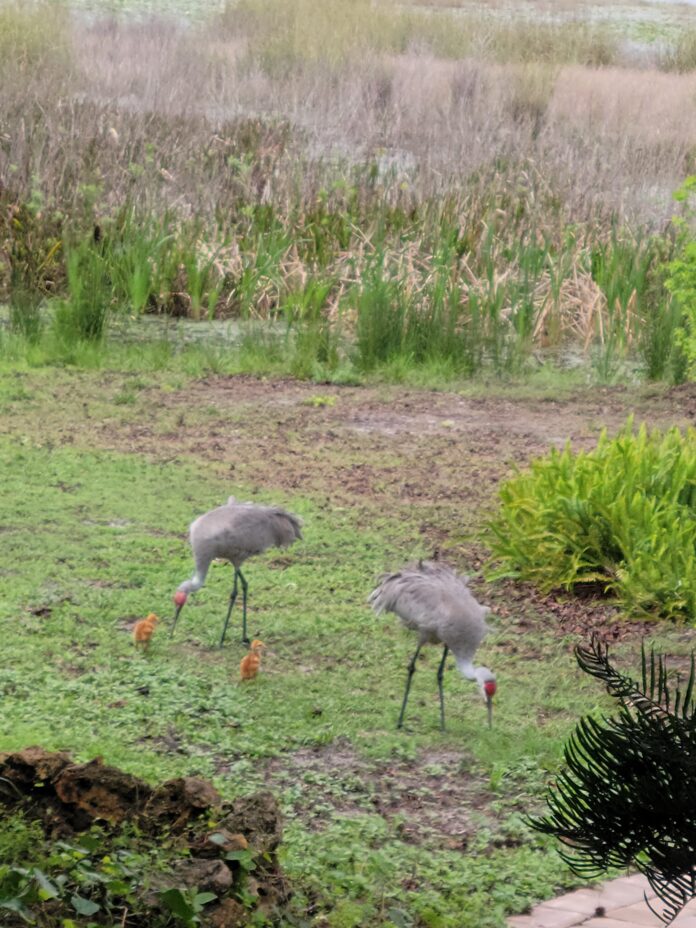
Sandhill cranes: You’ve definitely seen them flying around or crossing the street — and you’ve definitely heard their “GRONK!”
What makes this species of bird so special? And how can we live with them more sustainably and safely?
Well, for starters, don’t feed them, that’s illegal. Don’t kill them, either. While not an endangered species, enough of the birds have been wiped out to land the sandhill crane on a list of threatened species in Florida.
As such, they’re protected. Hunting, harming or harassing — that includes feeding — the birds can result in a penalty that could rise to a misdemeanor.
Beyond these protections, though, there aren’t many explicit safeguards on the books for sandhill cranes in Volusia County.
While the cranes may hold the same “threatened” status that gopher tortoises hold, there are no similar development regulations that require the birds to be protected when bulldozers roll in. The cranes build nests in freshwater ponds and marshes, often near attractive places for development.
“We would prefer that sandhills have a nice, natural location without people around,” Stephen Kintner told The Beacon. “Because we are building in the areas where they like to be, or we’re building adjacent to areas they like to be, there’s always going to be that interaction. And we’re not going to stop growth in Florida. Not going to happen.”
Kintner, an avid protector of bird habitats, is the vice president of conservation at the West Volusia Audubon Society. He helped found Lyonia Preserve in Deltona, and much of his experience is with the Florida scrub jays there. He sees plenty of similarities between his scrub jays and the sandhills.
“When you see four or six sandhills together, that’s a family. Much like our scrub jays, they learn a lot about what needs to be done from their parents,” Kintner said. “How to be a sandhill is taught.”
Constantly around humans, the birds are more cavalier about walking up to people or vehicles than most. The Florida Fish and Wildlife Conservation Commission has some tips for how to best co-exist with our crane companions.
Again, don’t feed the birds. Not only is it illegal, but it helps them associate people with food. Drive carefully around not just subdivisions, but open areas like golf courses, too, to ensure you don’t accidentally strike a sandhill crane.
Another way to protect them, Kintner said, is to cultivate your lawn with Florida-friendly plants and no chemicals that kill bugs in the grass.
Florida-friendly plants, he explained, require less water to stay healthy, which means there’s more water in the ecosystem for sandhill habitats. And the chemicals in the grass can kill the bugs that sandhills rely on.
Ultimately, the best policy, Kintner said, is to leave the birds be.
“Live in harmony,” he said. “Let them do their own thing.”
Sandhill crane fast facts:
These large, impressive birds are easily recognizable by their size and distinctive crimson cap. Their chicks are equally recognizable balls of orange fluff that stick close to their parents, usually a mated pair.
Mate for life (which can be up to two decades!)
Attract mates with courtship dances
Are actually migratory, although Florida hosts resident populations year-round
Are prehistoric (the earliest sandhill crane fossil was found in Florida, and is estimated to be 2.5 million years old)